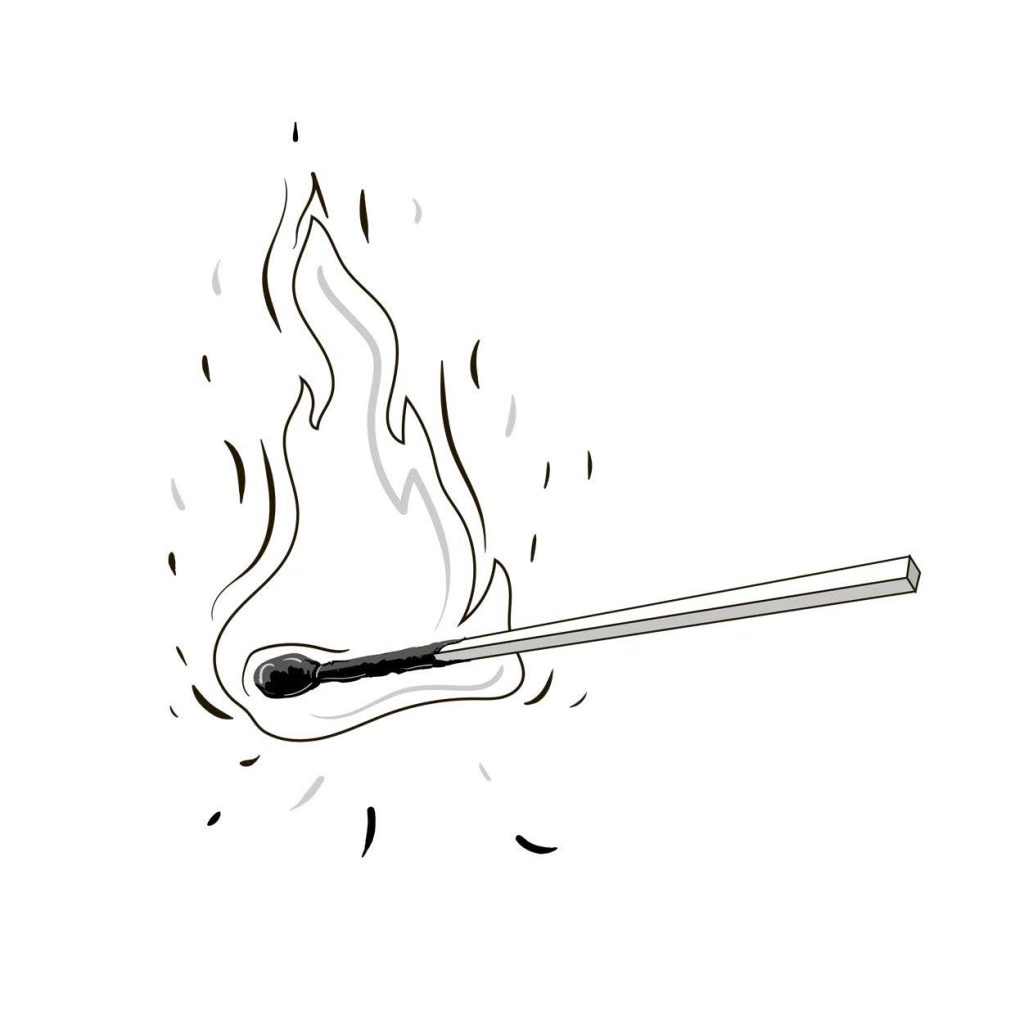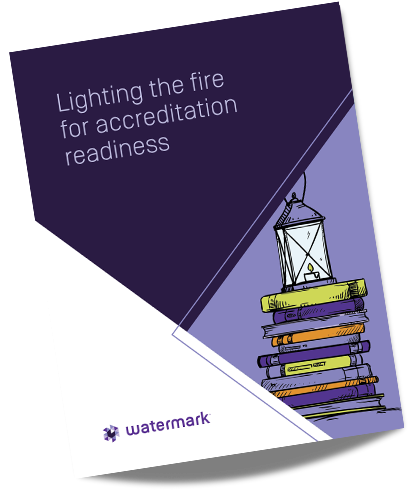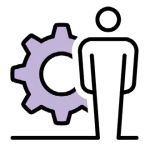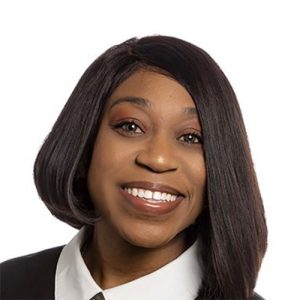
Before the late 1800s, college curricula were not overseen by either government or intercollegiate groups. In addition to being uniform in their teachings, these schools were not so numerous or as well- attended as they are now. But as the 19th century came to a close, American higher education institutions multiplied, becoming more varied in function and quality. A new need for standardization surfaced.

The high stakes, intricacy, and variability of accreditation requirements between regions can stretch faculty and administrators thin.
Does accreditation today really improve educational outcomes? Or, as some suggest, is its importance self-inflated and its protocol increasingly rigid? Does the current model for standardizing quality across higher ed institutions move meaningful changes forward, or does it block innovation that would better prepare students for professional success in the real world?
In this eBook, we’ll explore the value of accreditation, its limitations, and how administration and faculty can work together to elevate this process.


When it comes to being accredited, anyone under the magnifying glass feels the heat — and for good reason. “It can be very, very grueling,” admits TaLisha Givan, Ed.D, Chief Learning Officer and Vice Chancellor for Academic Affairs at Henderson State University.
Not only does the risk of losing accreditation create anxiety, but the labor of preparation is formidable.
“It’s an incredible amount of work,” says Elaine Marchello, Ph.D., Assistant Director of Assessment at the University of Arizona. “It took us two years to write our self-study. And the visit was, what? Three days? It’s a lot of detail. And nobody’s trained in it. So, unless you hire somebody to lead your project, or you have somebody who’s experienced, it can be a real challenge.”
It’s helpful to conceptualize these conflicting perspectives from faculty and administration as two necessary elements in service of the same goal — flint and steel that, when forced together, become a firestarter.
Those familiar with accreditation prep also know that, when it comes to philosophies about how to navigate it, not everyone is in agreement. There is a tug-of-war between two overarching attitudes about the “right” way to engage. Often this is manifested in the conflicting expectations of faculty and administration that seem to chafe against each other. It’s the “I know what’s best for my students” versus “the checklist, get it all done” paradigm, explains Dr. Givan.
“I think the disconnect that happens there is that we see accreditation for two different purposes. When, if we think about what accreditation really is, it’s a reflective practice for the greater good. To build a best practice, to look forward.”
What is this “greater good” that Dr. Givan speaks of? To ensure a quality education for students. It’s helpful, then, to conceptualize these conflicting perspectives from faculty and administration as two necessary elements in service of the same goal — flint and steel that, when forced together, become a firestarter.
Collaboration is essential to reaping the benefits of accreditation — not just between administration and faculty, but also between higher education institutions and their peers. This collaboration has the potential to transmute the industry into something more equitable and expansive, but it requires rigorous self-examination and responsiveness to difficult, but edifying, feedback.
“I always remind people that those who are conducting the reviews are our peers,” says Jerry Edmonds, Ph.D., Senior Assistant Provost for Academic Affairs and adjunct professor at Syracuse University. “And our peers have come together through sharing what the standards are and voting on them, submitting comments on them. We’re working together on accreditation and peer review.”
In the same vein, Dr. Edmonds recommends paying attention to the insights of your institution’s peer reviewers, who have firsthand experience with how to organize — or not organize — an on-site visit. Can you make reviewers more comfortable by having someone dedicated to greeting them after each meeting? Directing them through campus? These details matter.
On-site visits provide visibility into the culture of assessment on campus, which is an essential element of the accreditation process. Defined as a commitment to reflection and a willingness to adapt, a culture of assessment must be cultivated over time. It is essential to organize this culture around a shared acknowledgment that accreditation, while imperfect, is the best available system for ensuring quality and consistency across institutions. “Accreditation is necessary because there has to be some guide, right?” says Dr. Givan. “Some boundaries.”
Of course, the boundaries must be flexible to be tenable. A common criticism of accrediting agencies is that they are too stringent, particularly when it comes to the evaluation of historically underfunded institutions. But there are those who remain optimistic about the ability of accrediting bodies to adapt and grow to meet their mission.
“There’s enough room to navigate those differences,” says Dr. Edmonds. Still, he admits that specialized accreditation can fall into a different category. “In some cases, they’re very prescriptive in what their expectations are, for example in terms of student performance or facilities.” This can make it extremely difficult, if not impossible, for a school that lacks appropriate resources to achieve accreditation.
Organize a culture of assessment around a shared acknowledgment that accreditation, while imperfect, is the best available system for ensuring quality and consistency across institutions.
In 2020, the American Federation of Teachers summarized its recent findings succinctly in the headline, “Report shows alarming poverty among adjunct faculty.” At the start of 2022, The Chronicle of Higher Education ran an article titled, “The Great Faculty Disengagement.” And in early 2023, Nature published in its online Career Feature vertical, “Fed Up and Burnt Out: ’Quiet Quitting’ hits academia.”
As the titles suggest, the academic vocation is not what it once was. Faculty makeup has shifted dramatically in recent decades from primarily tenured or tenure-track to primarily contingent, and so have educators’ security, freedoms, and workloads. As is often the case, these changes disproportionately impact women, faculty of color, and other marginalized groups.
Data from the National Center for Education Statistics (NCES), summarized by the American Association of University Professors, describes patterns of faculty appointments and graduate student employment in American higher education.
Faculty involvement is vital to the health of any institution’s culture of assessment. Since recruiting their energy and attention requires sensitivity and respect for the challenges they face, consider approaching their involvement with a few basic guidelines in mind:

It’s about simplifying, appreciating where you already show strength, and creating a plan for improvement from there. Boiled down, your focus can be organized around answering two simple questions:
 Treat your institution’s previous self-study as a roadmap.
Treat your institution’s previous self-study as a roadmap.“You will learn things about the institution you never knew existed if you read through that self-study,” says Dr. Marchello. “Because that self-study is basically a giant index, by category, of everything that institution does and offers — how and why everything works.”
 Use professional project managers.
Use professional project managers.“We run our self-study like a big project,” says Dr. Edmonds. “So on our operations team, we’ll have professional project managers. And then a support team that’s supporting the faculty and staff who are working on the standards’ review and criteria.”

“If we’re thinking about who we are along the way, then it doesn’t become such a horrible process at the end,” says Dr. Givan. “If we spend time every semester, or every year, in some kind of way, looking at what we’ve done well so far; if we’re capturing data in X, Y, and Z ways; then, when it’s time for us to say, Here are all the things that we’ve done well and not done well — it’s already built.”
Finally, embrace conflict as an opportunity to sharpen your tools. When faculty and administration butt heads about how to follow the path, understand that both bring valuable perspectives that can help to enhance or check each other.
“It’s like a pendulum swing, right?” says Dr. Givan. “We can’t all be on the checklist, get it all done side. But we also cannot all sit on the side of, but I know what’s best for my students.”
The result is a way that’s neither too rigid nor too lax — an approach that balances idealism with pragmatism. “There has to be this meeting in the middle,” says Dr. Givan. It’s in the middle where the work gets done.
It’s in the middle where the work gets done.
Dr. Gerald (Jerry) Edmonds is Senior Assistant Provost for Academic Affairs at Syracuse University and leads university initiatives on institutional effectiveness and assessment. He received his Bachelor of Arts (Hons) in English and Communication Studies from York University; Master of Arts in Communication Studies from the University of Windsor; Master of Business Administration in Management from Syracuse University; and Doctor of Philosophy in Instructional Design, Development, and Evaluation from Syracuse University. Dr. Edmonds also completed the intensive Harvard Institute for Higher Education Management Development Program.

Dr. TaLisha Givan earned a Bachelor of Science in Education at Henderson State University in Arkadelphia, Arkansas. She earned her Master of Science in Education and Doctor of Education in Education Administration and Supervision from the University of Arkansas at Little Rock. Dr. Givan is in her 13th year at Henderson State University, where she serves as the Chief Learning Officer and Vice Chancellor for Academic Affairs.
Dr. Elaine Marchello received her Bachelor and Master of Science at University of Illinois at Urbana-Champaign and her Doctor of Philosophy at University of Arizona — all in Animal Sciences — before switching to work with academic programs. She is the Assistant Director of Assessment in the University Center for Assessment, Teaching, and Technology and the Director of Assessment for General Education at the University of Arizona. Dr. Marchello also assists with accreditation and academic program reviews.
Alstete, J.W. (2007). A Brief History of College Accreditation. In: College Accreditation: Managing Internal
Revitalization and Public Respect. Palgrave Macmillan, New York.
https://link.springer.com/chapter/10.1057/9780230601932_2
https://www.brookings.edu/opinions/is-business-about-to-disrupt-the-college-accreditation-system/
https://www.aft.org/news/report-shows-alarming-poverty-among-adjunct-faculty
https://www.chronicle.com/article/the-great-faculty-disengagement?sra=true&cid=gen_sign_in
https://www.nature.com/articles/d41586-023-00633-w
https://www.aaup.org/issues/contingent-faculty-positions/resources-contingent-positions
https://www.aaup.org/sites/default/files/AAUP%20Data%20Snapshot.pdf

See how our tools are helping clients right now, get in-depth information on topics that matter, and stay up-to-date on trends in higher ed.